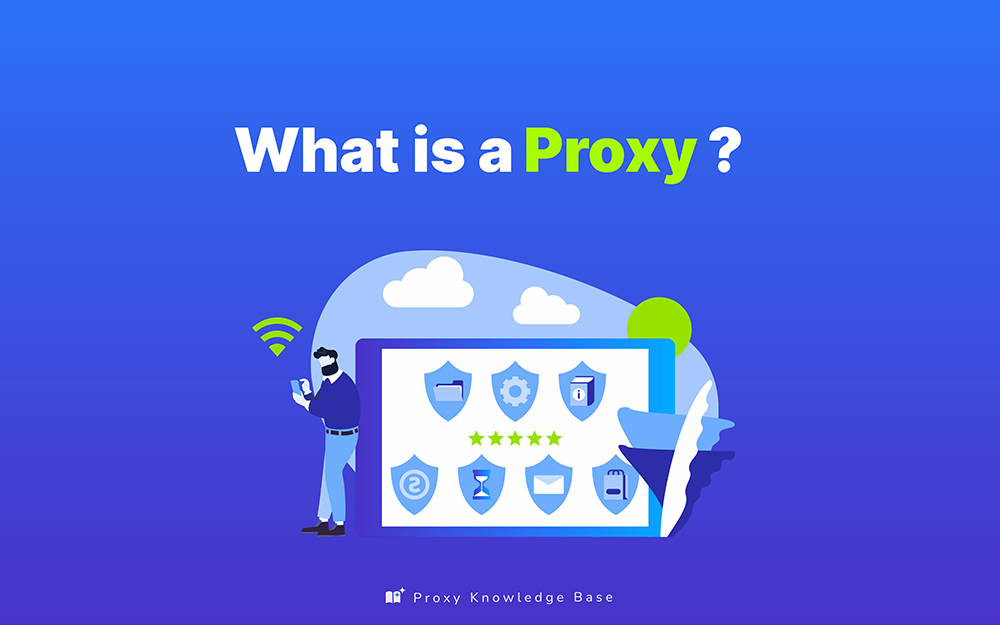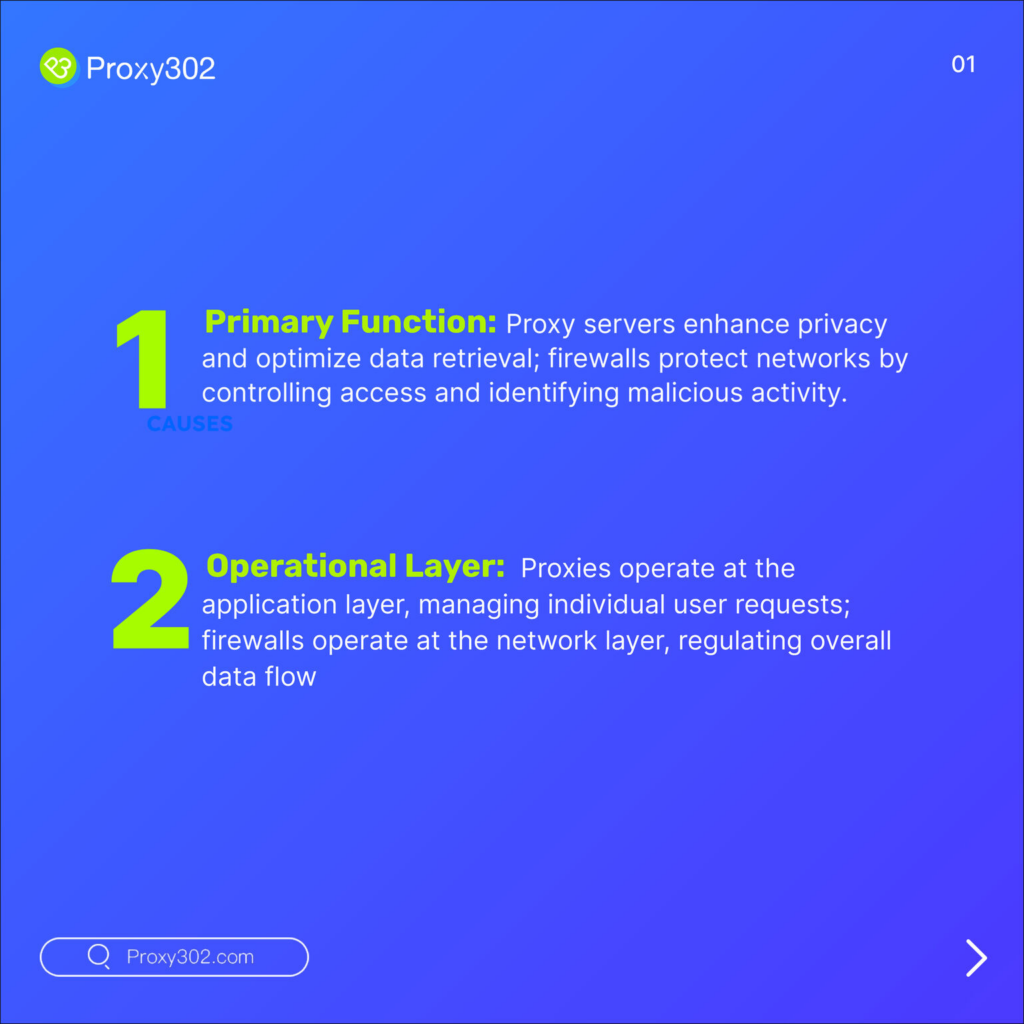Proxy servers and firewalls are two essential components of network security, each serving distinct purposes in protecting and managing network traffic. While both technologies sit between a user’s device and the internet, they operate at different layers of the OSI model and provide unique benefits.
Understanding the differences between proxy servers and firewalls is crucial for businesses and individuals looking to secure their networks and protect their online activities. By exploring the functionalities, use cases, and advantages of each technology, you can make informed decisions about how to best safeguard your data and maintain efficient network performance.
In this article, we’ll dive into the world of proxy servers and firewalls, examining their key characteristics, types, and configurations. We’ll also explore scenarios where each technology shines and discuss how they can work together to create a comprehensive network security strategy.
What is a Proxy Server?

A proxy server acts as an intermediary between a user’s device and the internet, forwarding requests and returning data on behalf of the client. When a user sends a request to access a website or online resource, the request is first sent to the proxy server, which then communicates with the target server on the user’s behalf.
One of the primary benefits of using a proxy server is anonymity. By hiding the user’s actual IP address behind the proxy’s IP, proxy servers can help protect user privacy and prevent websites from tracking their online activities. This is particularly useful for businesses and individuals who want to maintain anonymity while conducting market research, verifying ads, or accessing geo-restricted content.
Proxy servers also play a crucial role in improving network performance through caching. When a proxy server receives a request for a web page or resource, it checks its local cache to see if it has a recent copy of the requested content. If found, the proxy server can quickly deliver the cached content to the user, reducing the amount of data that needs to be transferred over the network and improving response times.
Key Uses of Proxy Servers
- Enabling access to geo-restricted content: Proxy servers can be used to bypass geographic restrictions on websites and online services, allowing users to access content that may be blocked in their region.
- Improving network performance: By caching frequently requested content, proxy servers can reduce network traffic and improve response times for users.
- Enforcing web filtering policies: Organizations can use proxy servers to control and monitor employee access to websites, blocking inappropriate or unproductive content.
- Protecting brand reputation: Businesses can use proxy servers to monitor and protect their online reputation by detecting and preventing unauthorized use of their intellectual property.
Proxy servers operate at the application layer (Layer 7) of the OSI model, which means they can inspect and modify the content of network packets. This allows proxy servers to perform advanced functions like content filtering, data compression, and SSL/TLS encryption.
What is a Firewall?
A firewall serves as a fundamental component in safeguarding network security, regulating the data flow between internal networks and external domains. By applying a defined set of security policies, firewalls decide which network traffic can pass through or should be blocked, effectively shielding trusted networks from potentially harmful external connections. This protective measure is crucial for maintaining the integrity and confidentiality of sensitive information.
Operating primarily at the network layer of the OSI model, firewalls can also extend their reach to higher layers in more sophisticated implementations. They can be deployed as standalone hardware devices or as software solutions, each bringing unique benefits. Hardware firewalls offer dedicated performance and are integrated into the network infrastructure, minimizing the impact on other system resources. Software firewalls, on the other hand, provide adaptability and are often installed directly on servers or end-user devices, allowing for customizable security measures.
Key Functions and Features of Firewalls
- Traffic Filtering: Firewalls examine data packets entering and leaving the network, making real-time decisions based on established criteria. This involves evaluating packet headers to identify details like source and destination IP addresses, port numbers, and protocol types.
- Network Address Translation (NAT): By translating internal IP addresses into a public IP address, NAT helps conserve public IP addresses and enhances privacy by concealing the internal network’s structure from external entities.
- Virtual Private Network (VPN) Support: Firewalls enable secure remote connectivity by supporting VPNs, which encrypt data traffic between remote users and the network, ensuring data privacy and protection during transmission.
Incorporating firewalls into a network security framework is essential for defending against unauthorized intrusions and cyber threats. As network architectures grow increasingly complex, firewalls are evolving to include advanced features such as intrusion detection and prevention systems (IDPS) and deep packet inspection (DPI) to counteract new and emerging security challenges.
Key Differences Between Proxy Servers and Firewalls



Proxy servers and firewalls, though both integral to network security, function distinctly and serve different primary purposes. At their essence, proxies excel in offering privacy enhancements and optimizing data retrieval, enabling users to obscure their digital footprints while accessing resources swiftly. This makes proxies particularly attractive for tasks that require discretion or involve high-volume data requests, such as market research and ad verification.
Firewalls, on the other hand, prioritize safeguarding networks by controlling access and identifying malicious activity. Their role is to create a secure boundary that evaluates network traffic based on rigorous criteria, ensuring that only approved communications proceed. This makes firewalls indispensable for organizations that emphasize securing sensitive information and preserving the integrity of their digital environments.
Operational Layers and Security Focus
The operational scope of these two technologies further delineates their functions. Proxy servers manage data at the application layer—enabling them to engage directly with the specifics of user requests and perform tasks like filtering and data transformation. In contrast, firewalls typically oversee traffic at the network layer, focusing on the regulation of data flow and security enforcement. Their capability to assess packet headers and apply security measures positions firewalls as crucial components in defending against network-based threats.
Complementary Roles in Network Security
While proxies and firewalls serve different roles, they can be configured to work in tandem, offering a layered defense strategy. In scenarios where both privacy and stringent access control are necessary, integrating proxy servers with firewalls adds depth to the security posture. Proxies can handle tasks related to privacy and data caching, while firewalls provide the necessary barrier against external threats. This complementary approach ensures that both performance and security are optimized, addressing a broad spectrum of network protection needs.
Proxy Server Types and Use Cases
Proxy servers are versatile tools with varying configurations designed to meet specific networking needs. Understanding the types of proxy servers can help businesses and individuals leverage their full potential for enhancing privacy, performance, and security.
Forward Proxies
Forward proxies serve as a bridge, facilitating connections between internal clients and external networks. By acting as a gatekeeper, they ensure that client requests are routed efficiently to the internet, providing a layer of privacy by concealing user information. Forward proxies also enhance network efficiency by temporarily storing web content, which can decrease the time it takes to access frequently used resources—a key benefit for enterprises managing substantial data traffic.
Reverse Proxies
Reverse proxies are designed to manage incoming requests from external sources directed at internal servers. These proxies offer a shield for internal servers, preventing direct exposure to external threats and potential attacks. Additionally, they improve network performance by distributing incoming requests across several servers, ensuring optimal load management and service reliability. Organizations offering online services or applications benefit significantly, as reverse proxies enhance scalability and secure the infrastructure.
Transparent Proxies
Transparent proxies uniquely intercept network traffic without requiring any configuration changes from the user. Operating seamlessly at the network layer, they are often used for monitoring and managing access to content, enforcing organizational policies without altering the user’s interaction with the network. This capability allows organizations to maintain compliance and bolster security protocols in a manner that remains unobtrusive to end users.
In various network environments, proxy servers fulfill diverse roles that extend beyond basic privacy and security. They effectively manage access to online content by filtering websites and compressing data to optimize network operations. Moreover, proxies support access to restricted resources, overcoming regional limitations to broaden the range of available content. These functionalities make proxies indispensable in shaping a robust network strategy, tailored to the specific objectives and requirements of contemporary digital infrastructures.
Firewall Types and Configurations
Firewall technology continues to develop, offering diverse solutions tailored to various network security needs. Each type of firewall brings distinct features and operational advantages.
Packet-Filtering Firewalls
These firewalls act as gatekeepers by scrutinizing incoming and outgoing data packets based on a set of established rules. They focus on packet attributes like IP addresses, ports, and protocols to determine whether packets should be allowed or blocked. While packet-filtering firewalls effectively manage basic traffic control, they do not delve into packet contents, ensuring minimal performance impact—ideal for settings where simple access control is sufficient.
Stateful Inspection Firewalls
Stateful inspection firewalls enhance security by keeping track of the state of active connections. This dynamic approach allows them to assess traffic contextually, identifying and blocking suspicious or unauthorized activity. By maintaining a record of connection states, these firewalls make decisions based on the overall flow of network traffic, offering a more sophisticated defense against potential threats without merely relying on static rules.
Next-Generation Firewalls (NGFW)
Next-generation firewalls combine traditional security features with advanced capabilities, such as deep packet inspection and intrusion prevention systems. They provide comprehensive traffic analysis and application-level control, enabling precise policy enforcement and threat mitigation. NGFWs can identify applications regardless of ports or protocols, offering detailed insights into network activities and enhancing overall security posture.
Configurations for Enhanced Security
Strategic firewall configurations play a crucial role in fortifying network defenses. Network segmentation through firewalls can limit threat propagation by isolating critical systems and sensitive data. Implementing virtual private network (VPN) connectivity ensures secure remote access, encrypting data in transit. Establishing demilitarized zones (DMZ) further protects public-facing services, creating a buffer zone that reduces exposure to external attacks. These configurations, when thoughtfully applied, contribute to a robust and secure network environment.
Choosing Between a Proxy Server and a Firewall
Determining the right mix of proxy servers and firewalls hinges on your network’s specific needs and security goals. Proxy servers stand out for their ability to mask user identity, optimize data access, and bypass content restrictions—making them essential for operations that require discrete data gathering and swift retrieval. This feature is particularly beneficial for businesses engaged in activities like competitive analysis and accessing otherwise unavailable digital resources.
Firewalls, on the other hand, are indispensable for organizations that need to guard the boundaries of their networks against unauthorized intrusions. By acting as vigilant gatekeepers, they scrutinize data flows, ensuring that only legitimate traffic can pass through. This makes them vital for maintaining the security and confidentiality of sensitive information, especially in sectors where data protection is a critical concern.
Integrating Both for Comprehensive Security
Adopting a strategy that utilizes both proxy servers and firewalls can provide a more robust security framework. This dual approach allows organizations to benefit from the discrete access and performance improvements offered by proxies while leveraging firewalls for their robust access control and threat mitigation capabilities. Such a layered defense not only enhances overall security but also ensures consistent management of both internal and external data interactions.
Considerations for Implementation
Choosing a proxy server or firewall solution requires a careful assessment of several critical factors. Scalability ensures that the solution can grow alongside business needs without losing effectiveness. Performance is crucial, as these solutions must handle increasing traffic loads without degradation. Ease of management is another vital consideration, allowing organizations to modify security settings as necessary with minimal complexity. Ensuring compatibility with existing systems is essential to facilitate seamless integration and maximize the effectiveness of the security infrastructure.
Regularly updating proxy server and firewall configurations to reflect the latest security protocols and organizational policies is vital. As the landscape of digital threats evolves, maintaining a flexible and proactive security posture becomes increasingly important. By aligning security measures with contemporary best practices, organizations can effectively shield their networks from emerging vulnerabilities.
As the digital landscape continues to evolve, staying informed about the roles and capabilities of proxy servers and firewalls is essential for maintaining a robust and secure network environment. By understanding the unique benefits and use cases of each technology, you can make informed decisions that align with your specific security needs and performance goals. Whether you choose to leverage the power of proxy servers, rely on the protection of firewalls, or adopt a comprehensive approach that integrates both, 👉 Start Your Free Trial Now 👈 and experience firsthand how our solutions can enhance your network security and performance.









5 comments
Your article helped me a lot, is there any more related content? Thanks!
Can you be more specific about the content of your article? After reading it, I still have some doubts. Hope you can help me.
Your article helped me a lot, is there any more related content? Thanks!
Thanks for sharing. I read many of your blog posts, cool, your blog is very good.
Can you be more specific about the content of your article? After reading it, I still have some doubts. Hope you can help me.